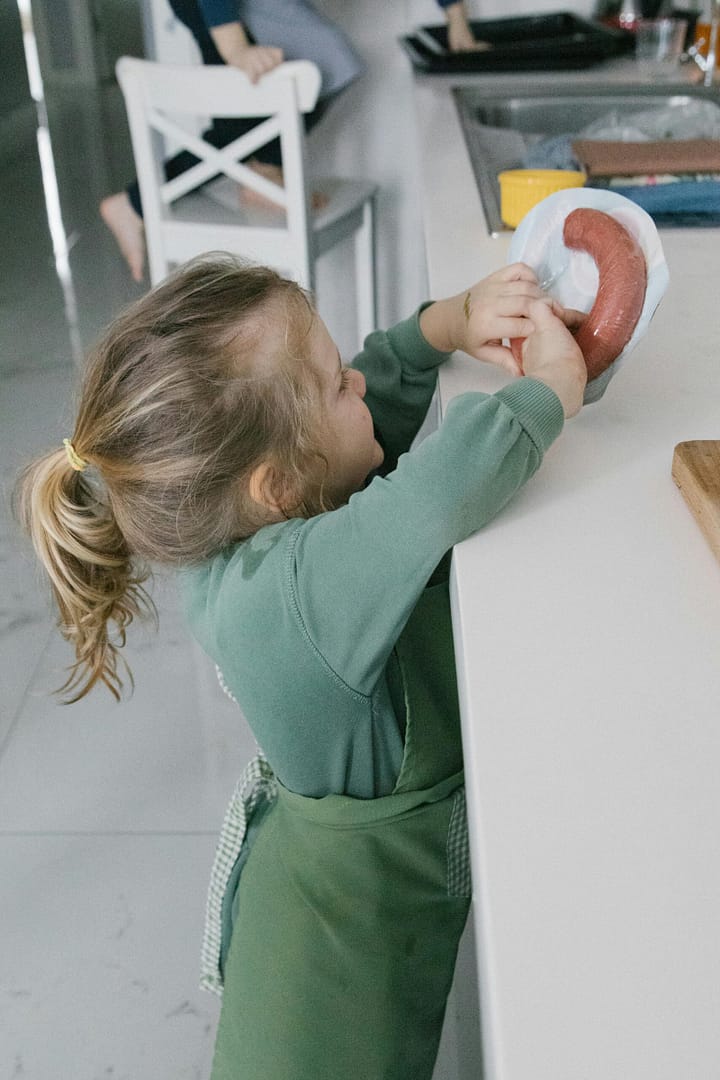How to Deal with Picky Eater: 8 Genius Tricks to Outsmart Your Toddler
Feeding a toddler can feel like running an obstacle course blindfolded. You plan, you prepare, and yet your child treats your carefully crafted meal like you’ve served them an alien dish. Sound familiar? You’re not alone. Learning how to deal with picky eaters is a universal challenge, but it doesn’t have to feel impossible. With a bit of creativity and patience (and maybe some reverse psychology), you can turn mealtime mayhem into moments of discovery and even a little fun.
Table of Contents
Let me tell you a story. It’s a Tuesday night, and I’m feeling ambitious—maybe even a little too confident. I’ve whipped up a dinner I’m sure my toddler will love: pasta with a creamy sauce, a sprinkle of cheese, and yes, a tiny side of peas. Harmless, right? Wrong. As soon as the plate hits the table, my toddler stares at it like I’ve served them a bowl of live spiders. “What’s that?” they ask, pointing at the peas as though they’ve been personally insulted. “They’re peas,” I reply, still hopeful. “You loved them last week.”
But last week is ancient history in toddler terms. “I don’t like peas!” they declare, folding their arms and frowning so hard I half-expect the peas to wither under the glare. And just like that, dinner becomes a battlefield. If you are like me, check our article to find innovative ways( or forgotten ones ) how to deal with picky eater.

If you’re looking for more creative strategies on how to deal with picky eater, don’t miss our guide on how to get picky eaters to try new foods. From fun food games to clever serving tricks, it’s packed with ideas to make mealtime less stressful and more successful!
The Problem: When Finding Ways How to Deal with Picky Eater is not just a phase anymore
At first, you thought, “It’s just a phase.” But months have passed, and your child is still living on a diet of crackers, air, and an occasional nugget. Every attempt to expand their menu is met with dramatic gags, a dramatic “yucky!” proclamation, or the dreaded refusal to even look at the food. You here all kinds of tips for picky eaters.
You start to wonder:
Are they getting enough nutrients?
Should I just give in and serve plain pasta forever?
How did I become the one eating all the vegetables?
The stress builds, mealtimes turn into battles, and you start dreading dinner. Sound familiar? Don’t worry—you’re not alone. And the solution isn’t giving up or doubling down on bribes.
The Agitation: When Mealtime Feels Like a Daily Battle
Mealtime battles are nothing new. You spend ages preparing a healthy, colorful meal, only to have it rejected with a dramatic “yuck!” or a flat-out refusal to even look at it. Suddenly, the dining table feels like a war zone, and you’re questioning every parenting choice you’ve ever made. But here’s the truth: dealing with picky eaters isn’t about forcing them to eat—it’s about understanding their preferences and making food exploration fun and pressure-free.
Picture this: you’ve spent 45 minutes preparing a healthy, colorful dinner. You even used a Pinterest recipe for inspiration. You present the plate with all the enthusiasm of a Michelin-starred chef. Your toddler? They take one glance and say, “Nope.” Here comes the frustration. Dinner time returns into a Broadway drama scene. You plead, they wine. You are making yourself into a ninja just to put a bite into their mouth.
Suddenly peas are all over the ceiling. You need to wash yourself thoroughly. This is the moment you say to yourself that this can’t go on anymore. In cases where picky eating becomes severe or impacts your child’s growth and health, therapy for picky eaters can be a helpful option to explore. If you are not there yet, keep reading.
Struggling with extreme picky eating can feel like an endless battle, but Helping Your Child with Extreme Picky Eating offers a lifeline for exhausted parents. This insightful guide is packed with practical strategies to make mealtimes less stressful and more successful. It dives deep into understanding the emotional and sensory challenges that picky eaters face and provides step-by-step solutions to encourage healthier eating habits.
If you’ve ever wondered how to deal with picky eater without turning every meal into a standoff, this book delivers real, actionable advice. It’s not about forcing bites or bribing with desserts but about creating a safe, positive eating environment where your child feels empowered to try new foods.
This book is a must-have for any parent navigating the picky eating phase—because mealtime shouldn’t be a battlefield.

Need more inspiration for mealtime variety? Check out our picky eaters food list for creative ideas and go-to options that can make feeding your toddler a little easier. It’s a handy guide for when you’re stuck wondering what to serve next!
Reverse Psychology That Actually Works: The Key on How to Deal with Picky Eater
Here’s where things get fun in learning how to deal with picky eater. Instead of battling over every bite, why not flip the script and use your toddler’s natural instincts to your advantage? Toddlers crave control, resist being told what to do, and are endlessly curious. So, lean into those traits! Let them feel like they’re in charge by offering choices, turning meals into fun experiments, and sparking their curiosity with colorful, unique foods. When you make eating feel like their decision, you’ll be one step closer to winning the picky eating game.
These eight reverse psychology strategies are designed to turn the tables and make your picky eater actually want to try new foods.
Quick Recap: How Do You Get a Picky Eater to Eat?
The “No-Taste Rule”
Here’s a playful trick for how to deal with picky eater—ban them from eating the new food! Yes, really. Place the new dish on your plate and say, “This is just for Mommy and Daddy. You’re not allowed to eat it.” Then, take a bite and exaggerate how delicious it is. Toddlers are naturally curious and love testing limits. By making the food seem off-limits, you’ll spark their curiosity and, more often than not, they’ll want to try it just to break the rules. It’s a fun and clever way to encourage picky eaters to explore new flavors!
Why It Works:
This playful approach taps into their natural curiosity and gives them a sense of control—a key part of how to deal with picky eaters.
The “Tiny Taste Test” Challenge
Here’s another fun tactic for how to deal with picky eater—slice the food into the tiniest, most ridiculous piece imaginable. Then, playfully challenge them by saying, “I bet you can’t handle the taste of this—it’s just too powerful for you!” Toddlers love a good challenge, especially when it feels like a game. This playful approach not only sparks curiosity but also turns mealtime into an exciting adventure. Sometimes, all it takes is a little humor and reverse psychology to get picky eaters to take that first bite!
Why It Works:
Toddlers love proving adults wrong. Presenting the food as a challenge plays into their desire to be brave and capable.
Transform picky eating into a fun adventure with these Vegetable Shape Cutters! Perfect for turning boring veggies into exciting shapes, these stainless steel cutters can make even the fussiest toddler curious enough to take a bite. Create stars, hearts, or animal-shaped cucumbers, carrots, and sandwiches—because when food is fun, kids are more likely to try it.
These cutters are a game-changer when figuring out how to deal with picky eaters. They make mealtime playful and engaging, encouraging your child to explore new textures and tastes. Plus, they’re super easy to use and clean—making your life a little easier, one bite at a time.
The “Invisible Plate” Strategy about How to Deal with Picky Eater
Here’s a clever strategy for how to deal with picky eater—don’t put the new food on their plate at all. Keep it on yours and act casual. If they notice and ask, respond with, “Oh, I thought you might not want any. Do you want me to put some on your plate?” This sparks their natural curiosity and gives them a sense of control. Sometimes, the easiest way to encourage a picky eater is by making the food seem like a special, grown-up treat they’re missing out on.
Why it works:
Giving them the power to say yes or no turns the meal into a choice rather than a battle. This aligns perfectly with tips for picky eaters to create a more relaxed mealtime.
The “Special Delivery” Method
Turn mealtime into an adventure when figuring out how to deal with picky eater. Present the food as a surprise gift, saying, “A magical chef made this and said it’s only for the most special toddlers! Should we try it together?” This playful approach adds excitement and curiosity, making the new food feel like a fun discovery rather than a challenge. When kids feel like they’re part of something special, they’re much more likely to give it a taste.
Why It Works:
The element of surprise and exclusivity makes the food feel like a treat instead of a chore. Bonus points if you give it a fun name like “Superhero Soup” or “Rainbow Veggie Sticks.”

The “Trade Deal” Tactic
Transform mealtime into a playful exchange to master how to deal with picky eater. Say, “I’ll trade you a bite of my broccoli for a piece of your chicken nugget.” Make it dramatic—savor your bite like it’s the best thing you’ve ever tasted. Then, with curiosity, ask them what they thought of theirs. This turns eating into a fun challenge, encouraging them to try new foods without feeling pressured.
Why It Works:
Framing the exchange as a fair deal makes trying new foods less intimidating. It also introduces the concept of sharing and compromise. It is another powerful method how to deal with picky eater
The “You Can Spit It Out” Rule
Give your toddler a sense of control by offering a “safety net” when figuring out how to deal with picky eater. Say, “You only have to try one bite. If you don’t like it, you can spit it into the napkin.” This lowers the pressure and makes them more likely to give it a try. Often, the fear of being stuck with an unpleasant taste keeps them from exploring, but knowing there’s an easy exit makes that first bite less intimidating.
Why It Works:
Giving them an “out” reduces the fear of trying something unfamiliar. And let’s be honest—most kids end up swallowing the bite anyway once they realize it’s not as bad as they thought.
The “Cooking Secrets” Game
Make your picky eater feel like an important part of the process by turning them into your “secret taste tester.” While cooking, hand them a small piece and say, “Don’t tell anyone, but I need you to taste this and see if it’s good enough for the meal.” This fun, playful approach not only sparks curiosity but also gives them a sense of control. When they feel like they’re in charge, they’re more likely to taste and approve—even if it’s a food they’d usually avoid. It’s a sneaky but effective trick for how to deal with picky eater!
Why It Works:
This approach fosters curiosity and builds confidence, turning the challenge of how to deal with picky eaters into a bonding activity.
Boost your toddler’s nutrition with these Organic Vegetable Powders—a perfect solution for picky eaters! If getting your child to eat their veggies feels like a daily battle, this powder makes it simple. Just sneak it into smoothies, sauces, or even muffins. They’ll never know, but you’ll know they’re getting essential nutrients.
This is one of my favorite hacks for figuring out how to deal with picky eaters. It’s an effortless way to turn their favorite snacks into power-packed meals, helping them develop healthier habits without the struggle. Plus, it saves you the mealtime stress—because secretly healthy can also be delicious!
The “Opposite Day” Approach
Serve the new food with an irresistible twist: “Don’t eat this one first—it’s not my favorite for kids.” This reverse psychology taps into their natural curiosity and love for defying the rules. Chances are, they’ll be reaching for that “forbidden” bite in no time. It’s a clever and playful strategy for how to deal with picky eater, turning their stubborn streak into your secret weapon for mealtime success!
Why It Works:
Toddlers love doing the opposite of what they’re told. By downplaying the food, you make it seem like their decision to try it was entirely their idea.

Outsmarting Your Picky Eater
Feeding a picky toddler doesn’t have to feel like a losing battle. With these clever reverse psychology strategies for how to deal with picky eater, you can make mealtime fun, engaging, and even a little sneaky. The goal isn’t to trick your child—it’s to spark their natural curiosity and let them feel in control of their food choices. Some days, they’ll surprise you by trying something new. Other days, they’ll cling to their beloved crackers. Either way, you’re doing great, and every small win counts on the journey to raising a more adventurous eater.
Let’s Tackle How to Deal with Picky Eater Phase Together!
Feeding a picky eater doesn’t have to feel like a constant struggle. With these strategies, you’re not just sneaking veggies onto their plate—you’re empowering your child to explore food on their own terms. Remember, how to deal with picky eaters isn’t about forcing them to change overnight. It’s about creating a positive, pressure-free environment that makes trying new foods a natural and enjoyable part of life. Celebrate small wins, stay patient, and don’t forget to laugh through the chaos. You’ve got this!
Share your own success stories how to deal with picky eater in the comments—we’d love to hear them! If you want to know more check our article about easy meal prep ideas . Remember, like and follow us on Facebook.






